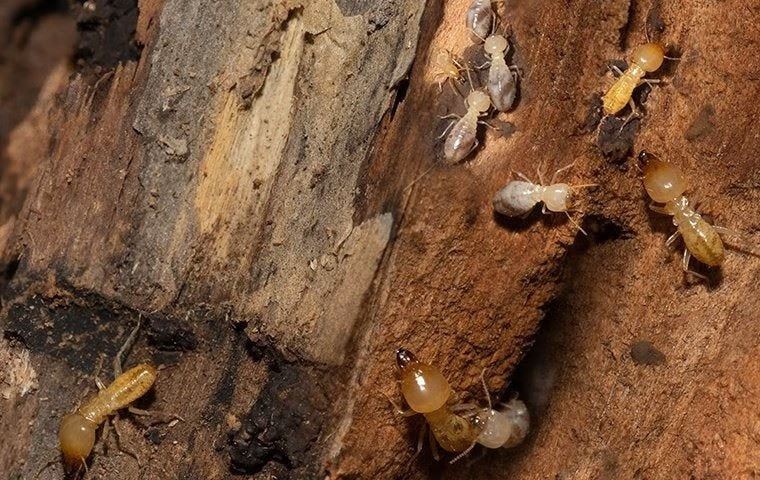
The Termite Colony
Termites are very social insects. In fact, thousands may live together in one colony. Learn more about the caste system in a colony and other interesting facts about termite colonies.
Though subterranean termites avoid interacting with us (unless you count the termite damage to our homes and businesses), they are very social insects that live together in large underground colonies. A colony of termites is made up of several thousand members and is organized into three castes: reproductive, workers, and soldiers. Keep reading to learn more about the different termite castes and how to control termites invading your home.
Reproductives - Also Known As Termite Swarmers

The reproductive termite swarmers are also called alates. New termite colonies often begin during the spring swarming season. The reproductive winged termite kings and queens leave their home, pair up and mate to establish a new colony of their own. After mating, their wings come off and they begin the excavation process of building a chamber big enough for them to crawl in. The queen lays her first batch of eggs and the colony begins. Older siblings pitch in and help the parents take care of the younger siblings. Each year the colony population increases with hundreds and even thousands of new members. Some established colonies have reached upwards of a million termites.
Termite Soldiers
The soldiers earn their name by the job or duty they perform. Their sole purpose is to defend the colony. The most common enemy they fight against is the persistent marauding ants. This warfare between these ants and termites has gone on almost from the beginning of time. The soldier can be easily recognized by his orange-colored head and mandible pinchers. These powerful mandible pinchers are used to crush any ants that invade their territory.
Termite Workers
The workers are without question the largest caste of any termite colony and the ones that leave behind mud tubes and are responsible for termite damage inside homes and other structures. The duties of the worker are numerous and range from gathering food and feeding the rest of the colony to constructing tunnels, building and repairing the colony nest, and caring for the young nymphs. The worker is quite small, and soft-bodied but equipped with hard mouthparts capable of chewing through wooden structures. They are not equipped with wings, cannot reproduce, and are blind. The worker performs his duties 24 hours a day for about two years and then dies.

What's the Action Advantage?
Find Out What Makes Us Different!
-
Environmentally-Friendly Products Available
-
After-Hours Answering Service Available
-
70+ Certified Pest Management Professionals
-
Trusted by the Community Since 1946



